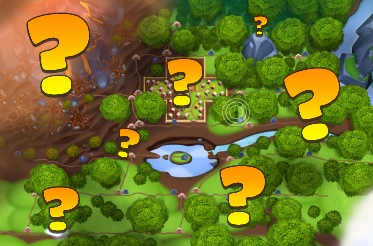Sometimes a game becomes more than the sum of its parts. In our case it may have turned into a new take on a genre.

When we started working on the design of Toki Tori 2, we were pretty convinced the Whistle & Stomp mechanic was solid. In short: every single puzzle needed to be solveable with just those two moves, the game should never artificially lock the player. Instead, we would unlock knowledge about the game world’s inner workings through gameplay so players could use that knowledge to progress. Extending the knowledge base of the player was also our way to reward revisits, as alternative paths which had always existed would suddenly become evident to them.
Still, we had a few open design questions that needed answers. One of those was how we were going to structure the world. Our first approach was to lay the entire game out as a giant 2D map. We wanted to have alternative solutions to puzzles, so that the harder puzzles were optional instead of mandatory as they were in the first Toki Tori. We struggled with this 2D map for a while. The limitations of having a 2D map meant any alternative path would have to somehow tie back into the easy path in order for the player to progress. Warps were considered as an option, but it made things too complex. It just didn’t feel like we had nailed it.
A strong desire we had from the start was to give players a sense of place simply by looking at the graphics. Environments were to flow over into each other seamlessly. Ideally we’d also be able to give players a sense of where they were going by already showing landmarks in the background, which isn’t easy if you only move sideways. We thought about bending the 2D map, so you could see a landmark you’d visit later on in the distance, but again it didn’t feel like an elegant solution.
This desire to foretell what was going to happen brought us the solution to the problem, as we suddenly realized we needed a 3D map in which every level was a 2D slice. We ended up with 8 slices in which levels could be placed, spaced out evenly in the third dimension. This approach solved many of our design problems; more difficult paths could branch out deeper into the game world, the size of a landmark in the background told players their location, it all made sense. Game world navigation was now also easily possible, since we could simply allow players to navigate a top down view of all the slices, see how they are connected, and show where they’d already been.
Which brings me to the point of this article, unknowingly we may have just made a Metroidvania with a twist! We have a 2D side scrolling game with alternative paths, a worldmap that marks where you’ve been, and a story that encourages backtracking and revisiting of previous areas. The big difference is, we don’t unlock items but knowledge about the game world to let players progress.
What do you think, do we fit the criteria?




 Press Info
Press Info